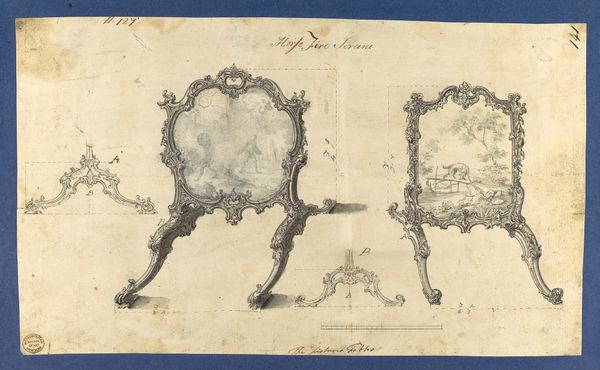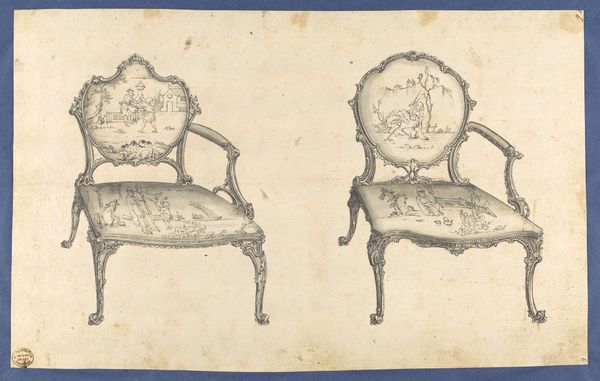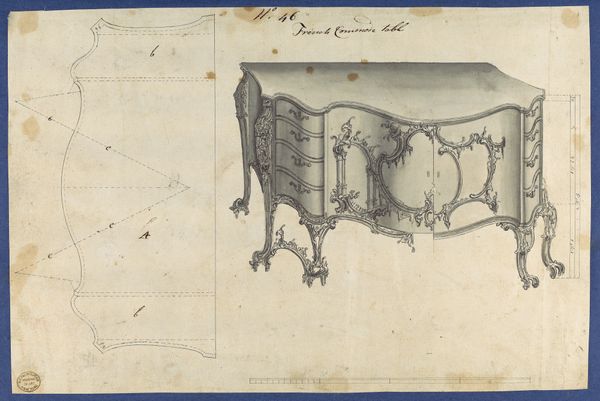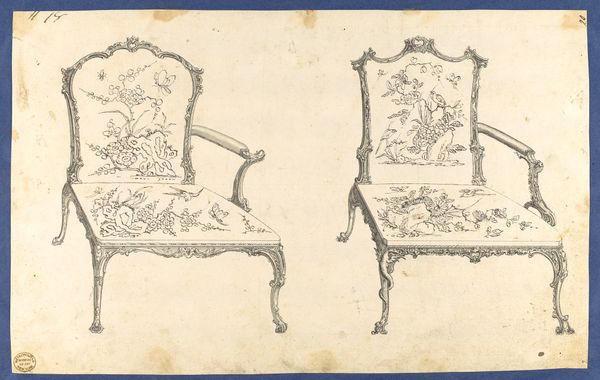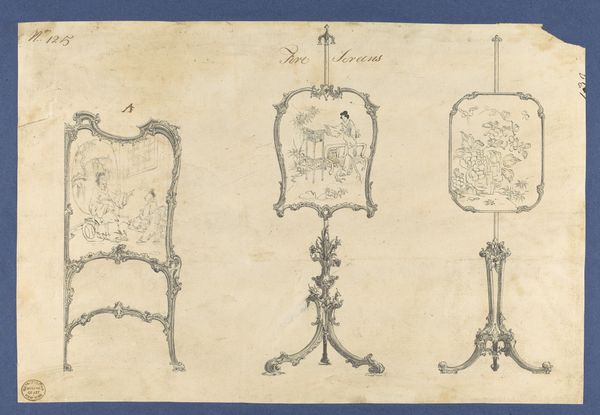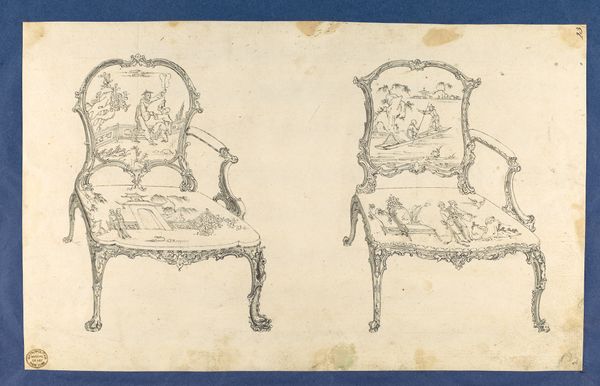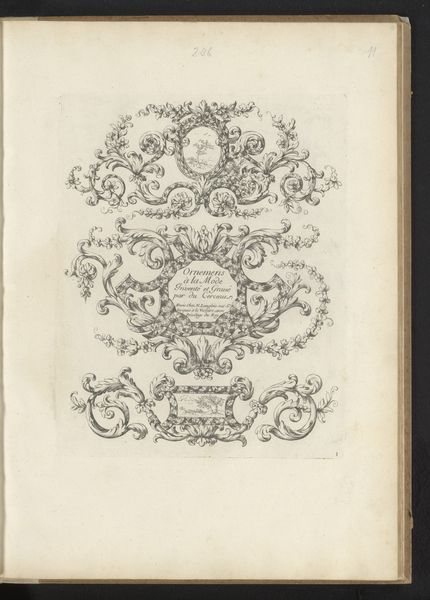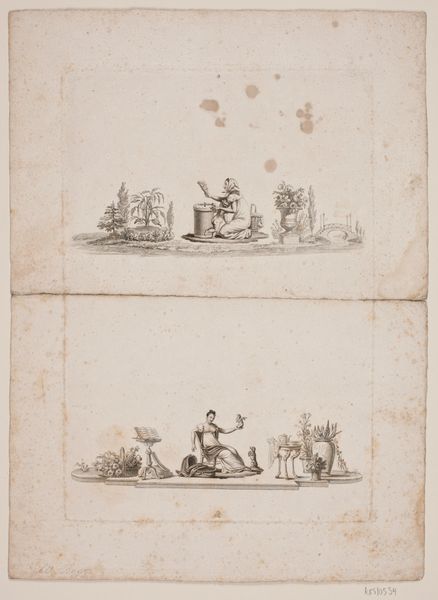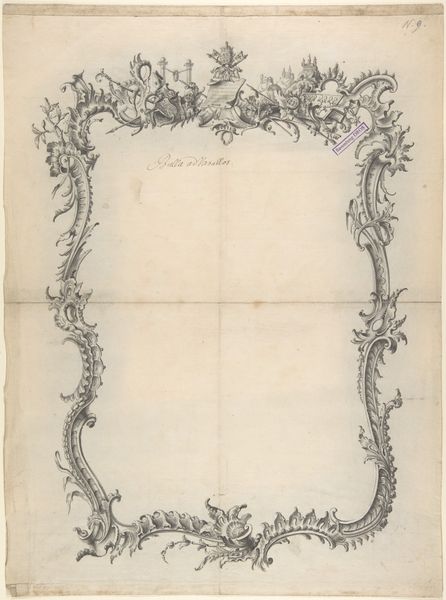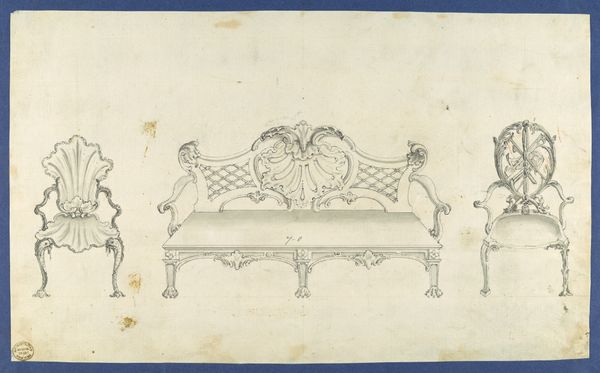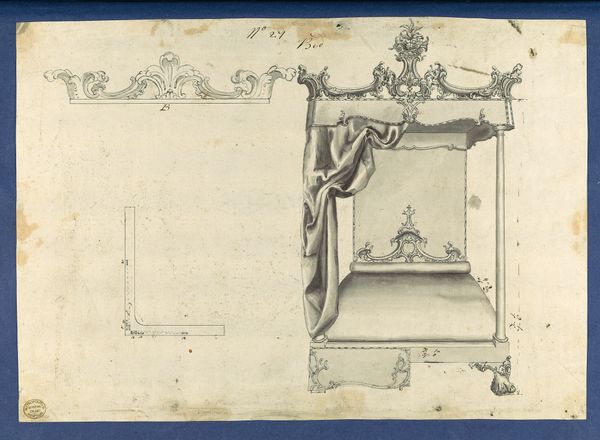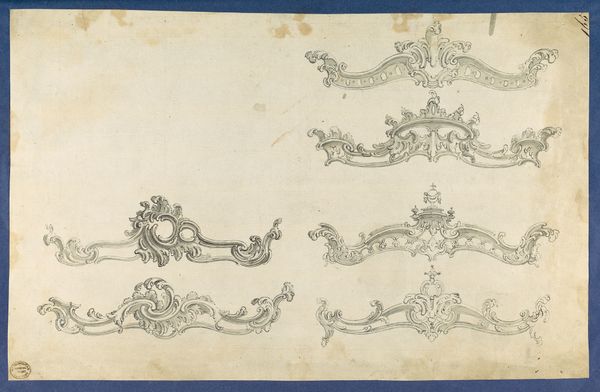
Horse Fire Screens, in Chippendale Drawings, Vol. I 1754
0:00
0:00
drawing, print
#
drawing
# print
#
landscape
#
figuration
#
classicism
#
line
#
decorative-art
Dimensions: sheet: 7 7/16 x 5 1/4 in. (18.9 x 13.3 cm)
Copyright: Public Domain
Editor: Here we have "Horse Fire Screens, in Chippendale Drawings, Vol. I" dating back to 1754 by Thomas Chippendale, a drawing and print now held at the Metropolitan Museum of Art. At first glance, I’m really struck by the delicate line work. It almost feels like a blueprint, revealing the elegance of a bygone era, and I wonder, what stands out to you in this piece? Curator: For me, this drawing reveals the complex interplay of taste and cultural influence in 18th-century England. Chippendale was immensely influential. This design, showcasing classical motifs mixed with chinoiserie, wasn't just about aesthetics; it reflected Britain's growing empire and its fascination with the "Orient". Consider the fire screen’s purpose: to protect delicate complexions from the heat of the fire, signaling a specific kind of refined domesticity. What does the inclusion of a detailed design indicate to you? Editor: I see that even utilitarian objects are canvases for displaying status, suggesting design's role in shaping cultural values, right? So, how would a fire screen convey a specific cultural or political message? Curator: Absolutely! By incorporating foreign motifs, the design speaks to global trade and empire, embedding a subtle form of national pride. The choice of subject and style reinforces social hierarchies and ideas about sophistication. But remember, these images can also invite questions of appropriation. Who has the power to represent whom, and to what effect? These screens allowed wealthy patrons to perform identity, while further enabling and solidifying colonial trade. Editor: That makes me see these "Horse Fire Screens" in a new light. I’ll definitely remember the connection between trade, wealth, and representation next time I visit the Met. Curator: Excellent! Analyzing these designs with a focus on their cultural function gives us a much deeper understanding of the society that produced and consumed them.
Comments
No comments
Be the first to comment and join the conversation on the ultimate creative platform.
